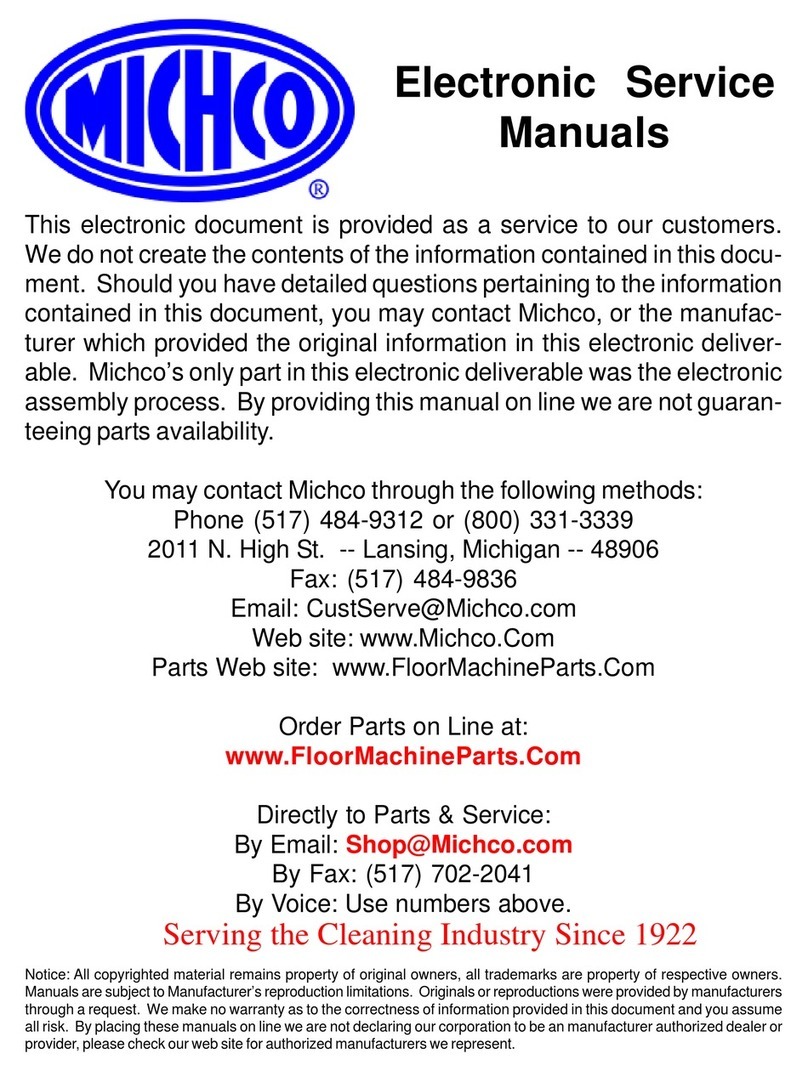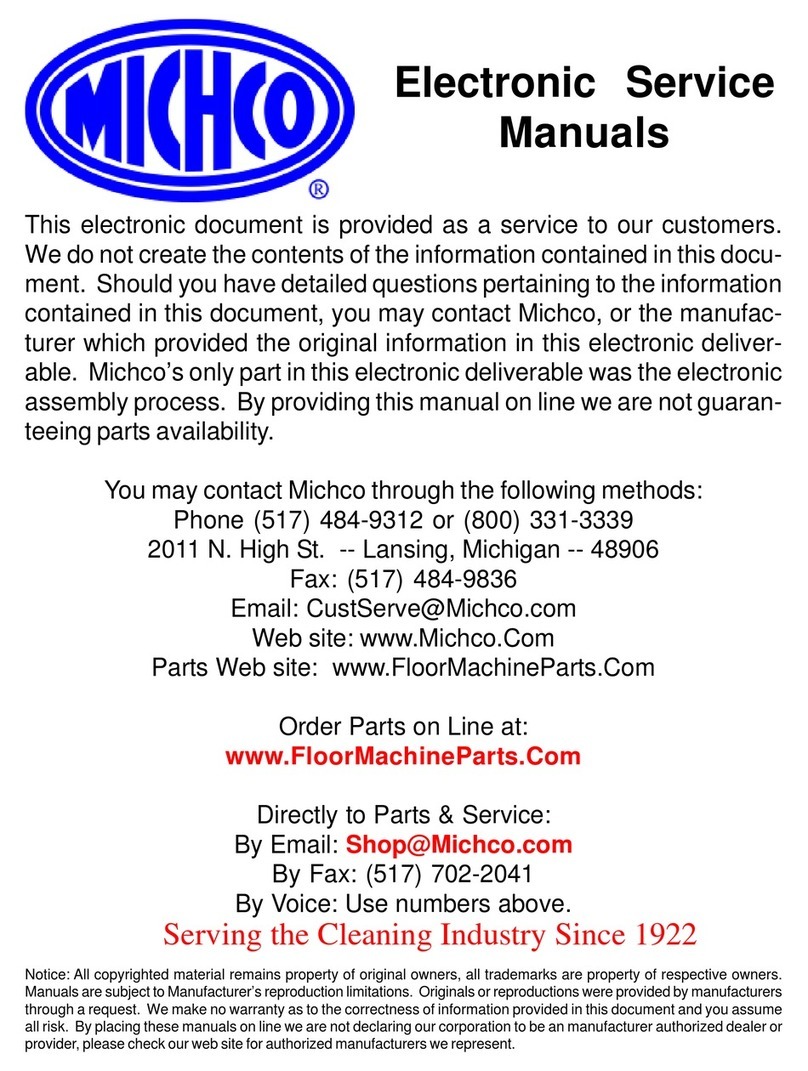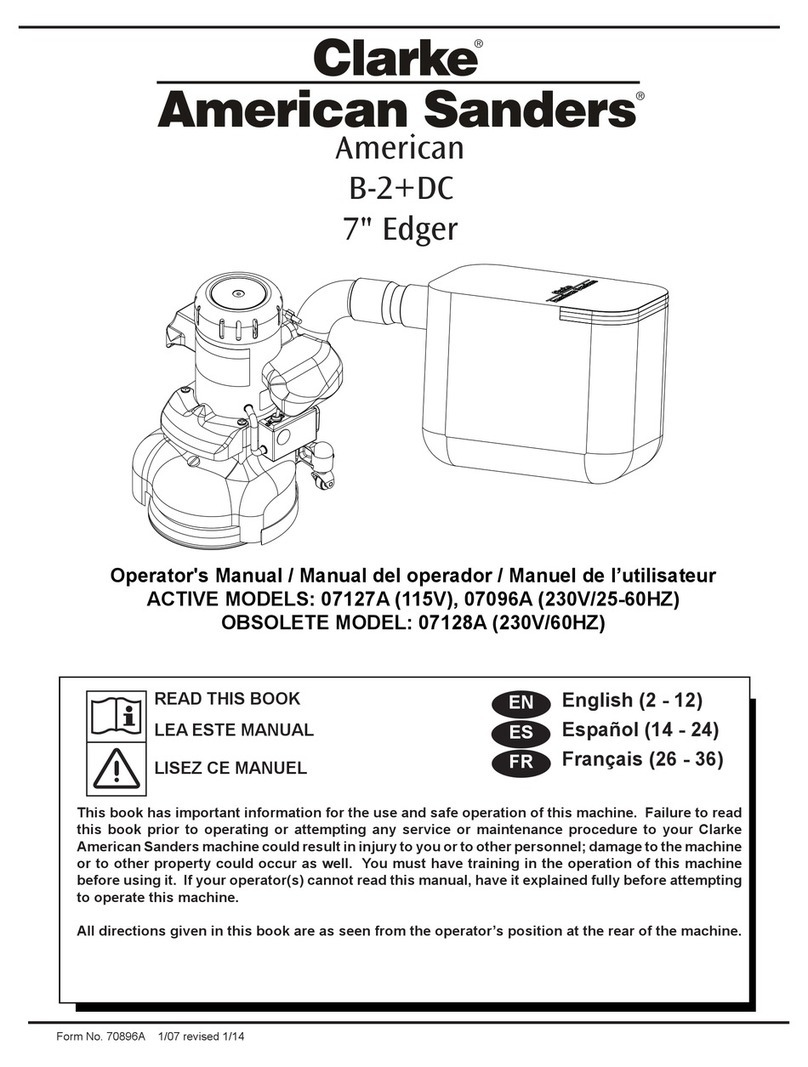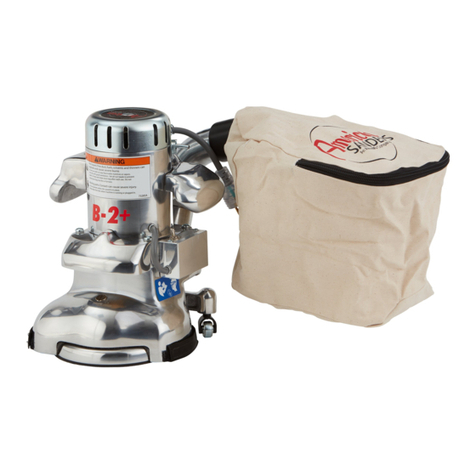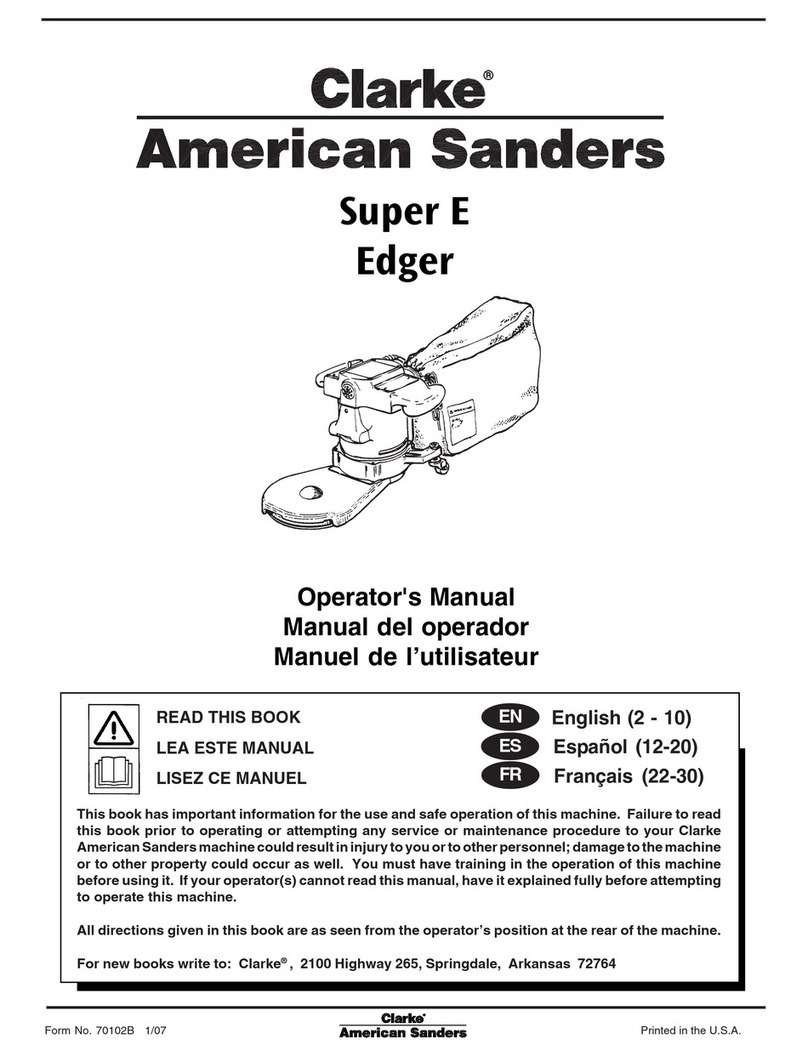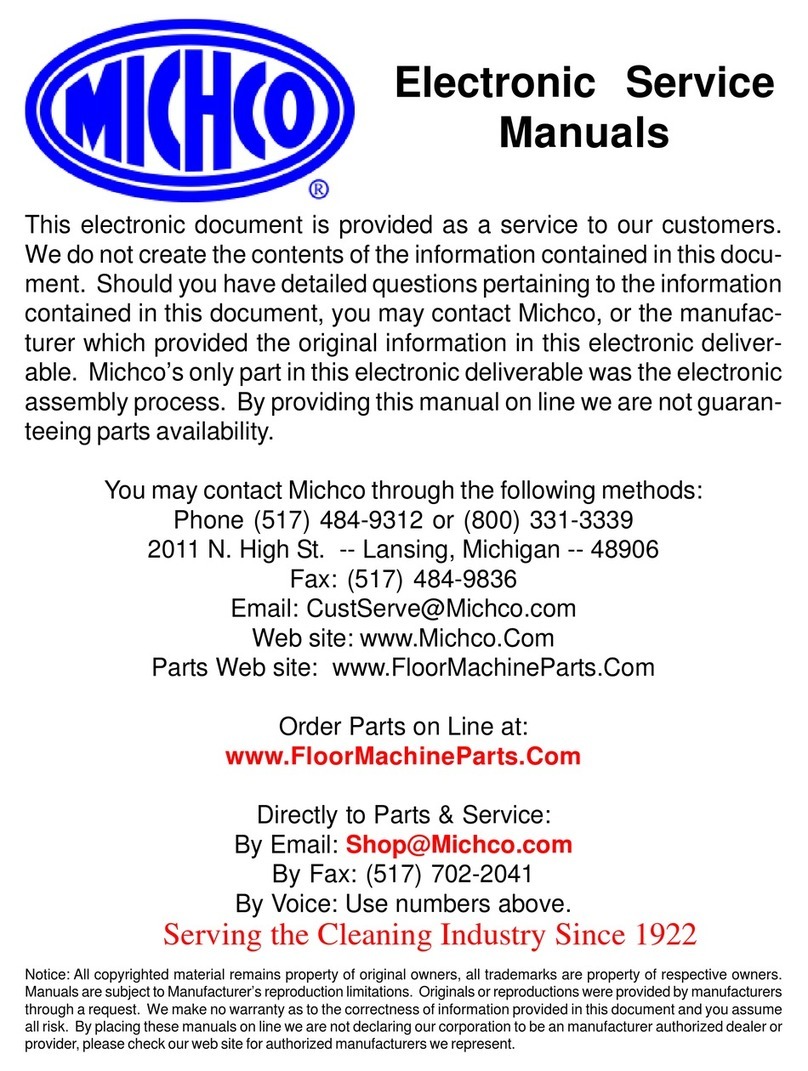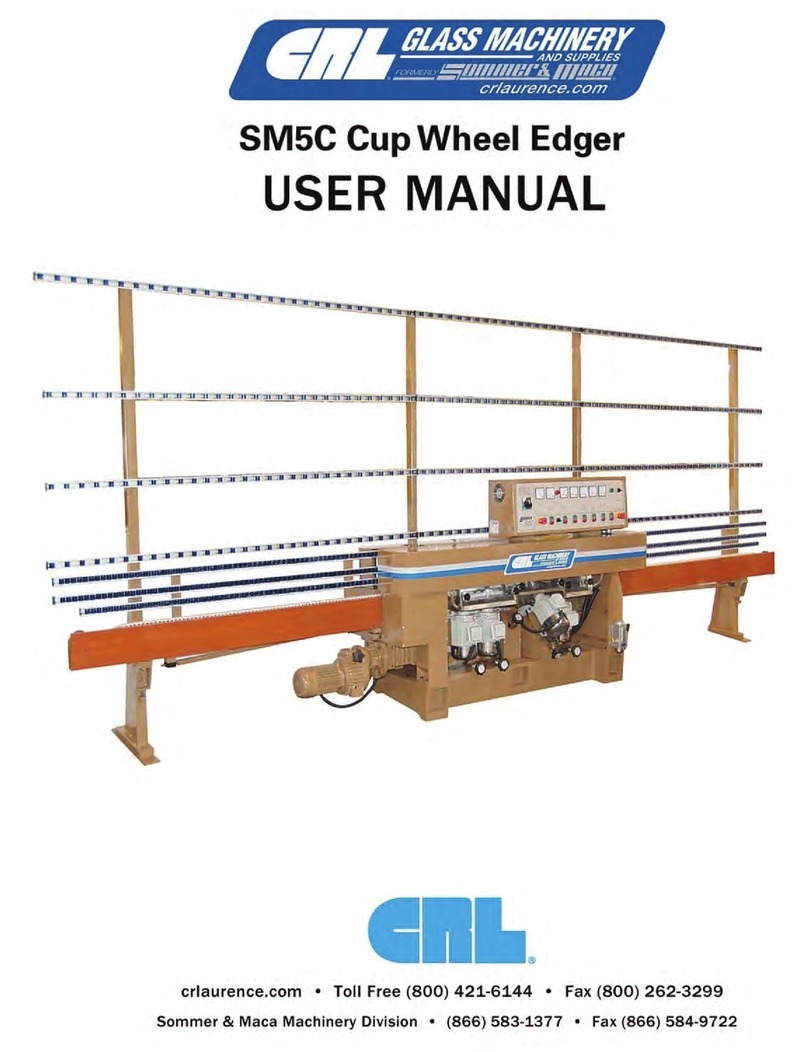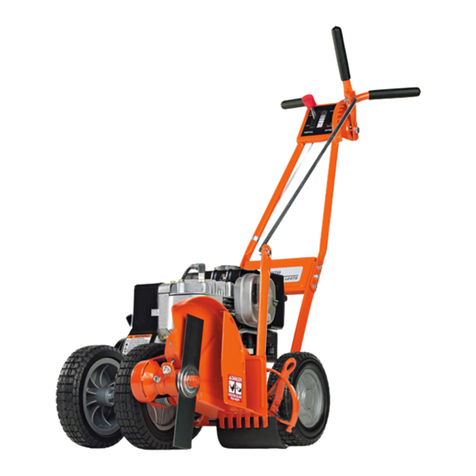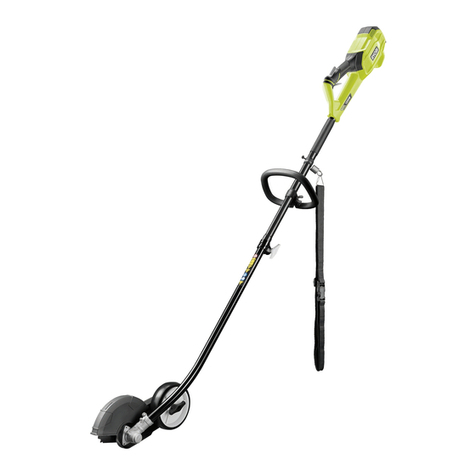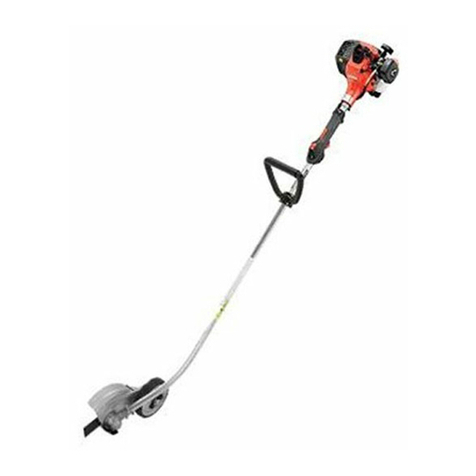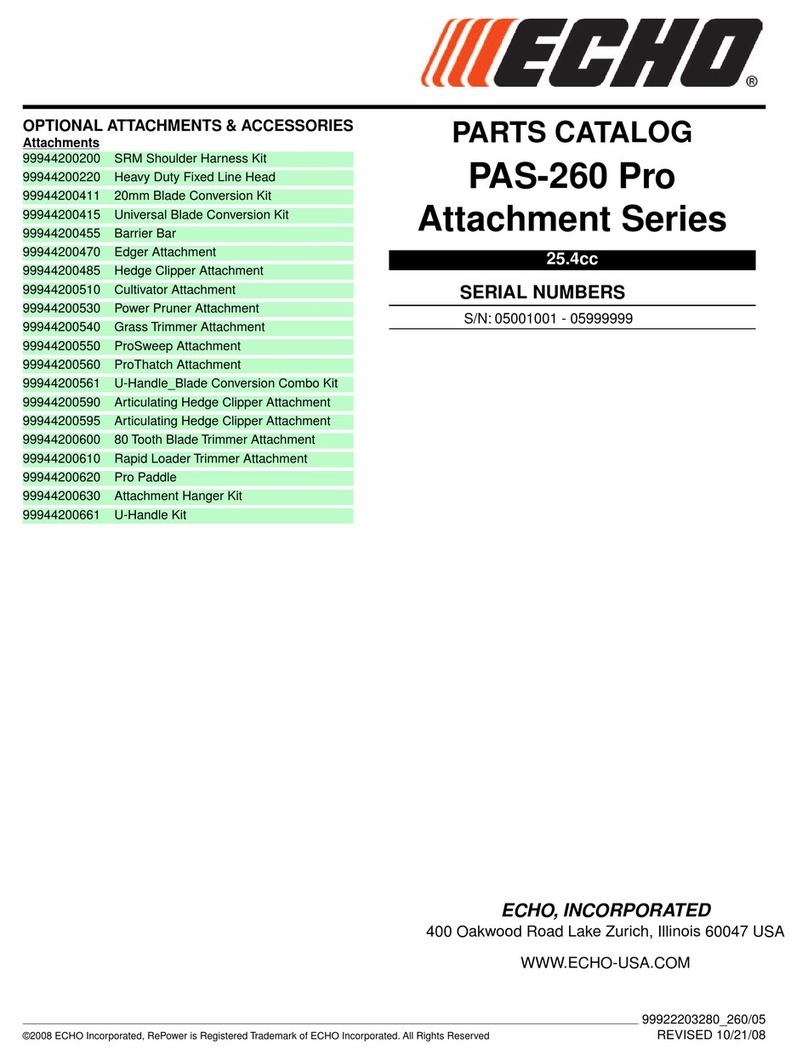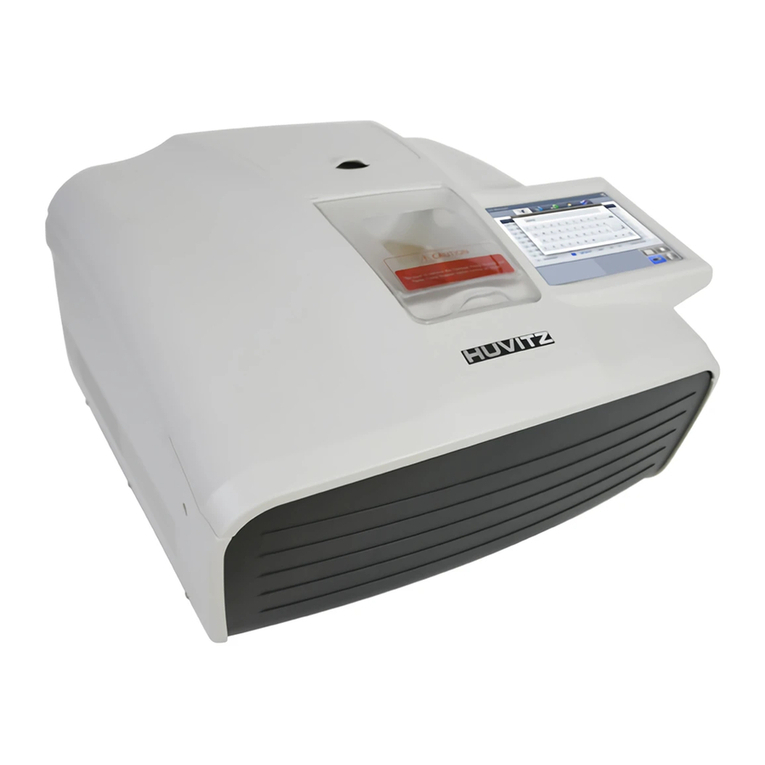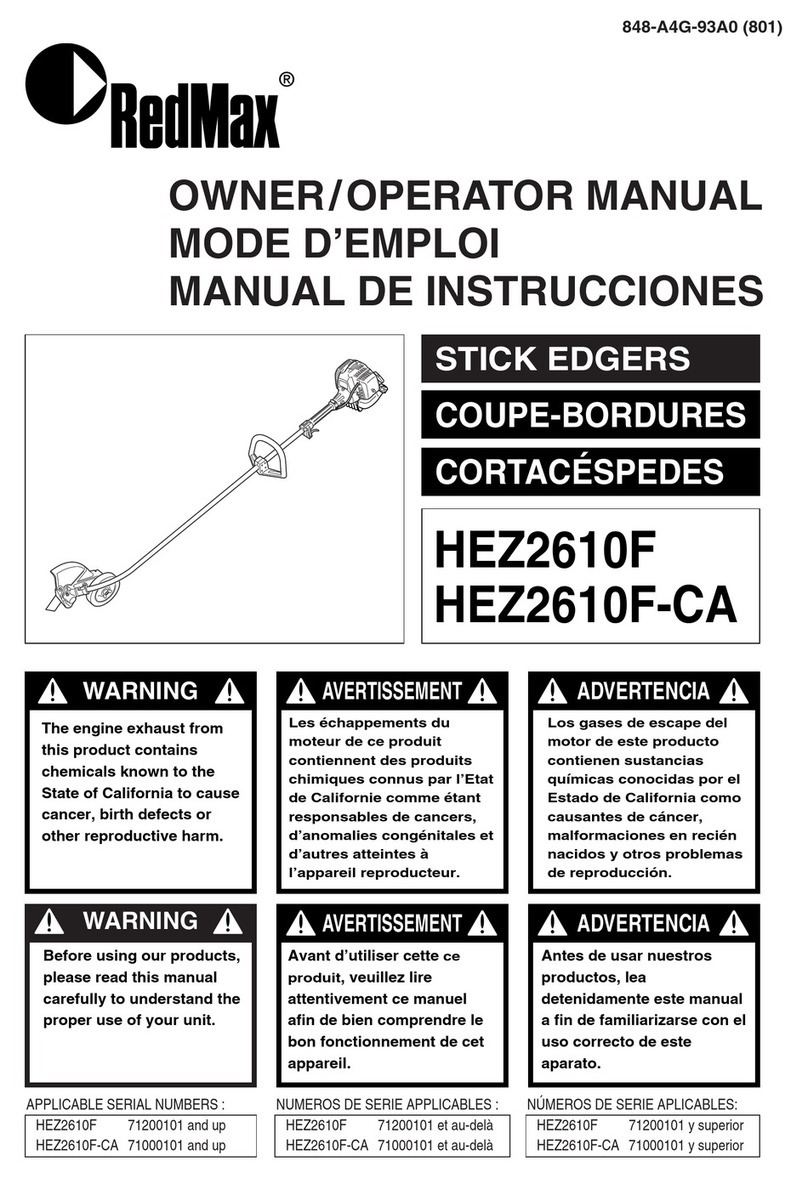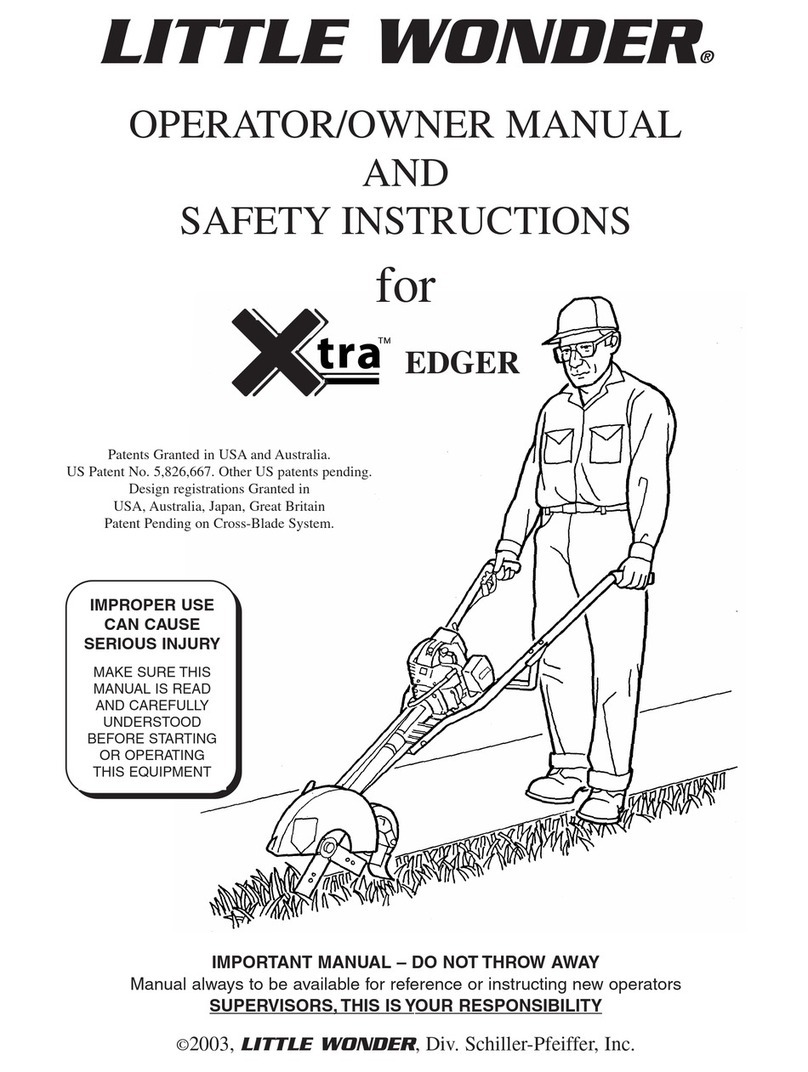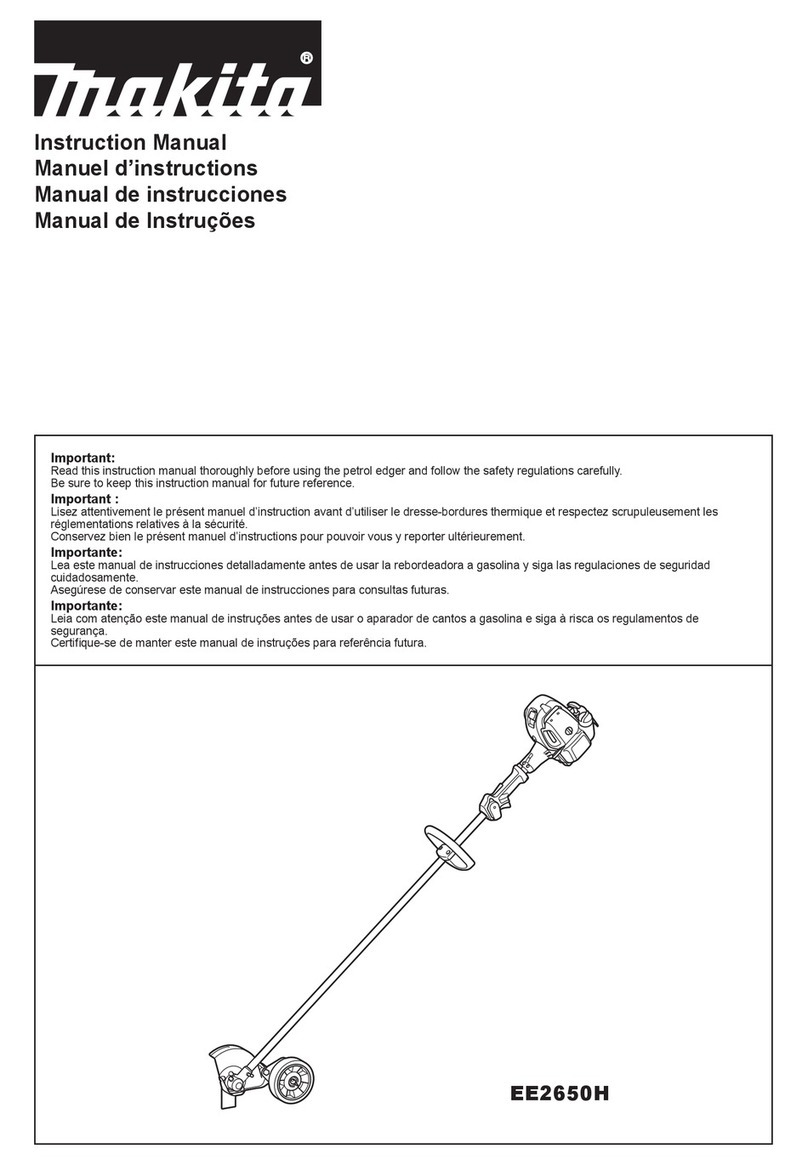
EN
ENGLISH
-4- FORM NO. 71376A - Clarke®American Sanders Operator's Manual (EN) - CE 7 Pro, SE7 Pro, CE7 Pro+, SE7 Pro+
Power tool use and care
1. Do not force the power tool. Use the correct power tool for your application. The correct power tool will do
the job better and safer at the rate it was designed.
2. Do not use the power tool if the switch does not turn it on and off. Any power tool that cannot be controlled
with the switch is dangerous and must be repaired.
3. Disconnect the plug from the power source and from the power tool before making any adjustments,
changing accessories or storing the power tool. Such preventative safety measures reduce the risk of starting
the power tool accidently.
4. Store idle power tools out of the reach of children and do not allow persons unfamiliar with the power tool or
these instructions to operate the power tool. Power tools are dangerous in the hands of untrained users.
5. Maintain power tools. Check for misalignment or binding of moving parts, breakage of parts and any other
condition that may affect the power tool’s operation. If damaged, have the power tool repaired before use.
Many accidents are caused by poorly maintained power tools.
6. Use the power tool, accessories and tool bits ect. in accordance with these instructions, taking into account
the working conditions and the work to be performed. Use of the power tool for operations different from those
intended could result in a hazardous situation.
Service
Have the power tool serviced by a qualified repair person using only identical replacement parts. This will
ensure that the safety of the power tool is maintained.
Safety Warnings For Sanding Operations
1. This power tool is intended to function as a sander. Read all safety warnings, instructions and
specifications provided with this power tool. Failure to follow all instructions listed below may result in electric
shock, fire, or personal injury.
2. Operations such as grinding, wire brushing, polishing or cutting-off, are not recommended to be performed
with this power tool. Operations for which the tool was not designed may create a hazard and cause personal
injury.
3. Do not use accessories which are not specifically designed and recommended by the tool manufacturer.
Just because the accessory can be attached to your power tool, it does not assure safe operation.
4. The rated speed of the accessory must be at least equal to the maximum speed marked on the power tool.
Accessories running faster than their rated speed can break and fly apart.
5. The outside diameter and thickness of your accessory must be within the capacity rating of your power tool.
Incorrectly sized accessories cannot be adequately guard or controlled.
6. The arbor size of wheels, flanges, backing pads or any other accessory must fit the spindle of the power
tool. Accessories with arbor holes that do not match the mounting hardware of the power tool will run out of
balance, vibrate excessively and may cause loss of control.
7. Do not use damaged accessory. Before each use inspect the accessory such as abrasive wheel for chips
or cracks, backing pad for cracks, tear or excess wear, wire brush for loose or cracked wires. If power tool
or accessory is dropped, inspect for damage or install an undamaged accessory. After inspecting or
installing an accessory, position yourself or bystanders away from the plane of the rotating accessory and
run the power tool at maximum no-load speed for one minute. Damaged accessories will normally break
apart during this time.
8. Wear personal protective equipment. Depending on application, use face shield, safety goggles or safety
glasses. As appropriate, wear dust mask, hearing protectors, gloves and workshop apron capable of
stopping flying debris generated by various operations. The eye protection must be capable of stopping flying
debris generated by various operations. The dust mask or respirator must be capable of filtering particles
generated by your operations. Prolonged exposure to high intensity noise may cause hearing loss.
9. Keep bystanders a safe distance away from work area. Anyone entering the work area must wear personal
protective equipment. Fragments of work piece or a broken accessory mayfly away and cause injury beyond
immediate area of operation.
10. Hold power tool by gripping insulated surfaces (handle) only, when performing an operation where the
cutting accessory may contact hidden wiring or its own cord. Cutting accessory contacting a “live” wire may
make exposed metal parts of the power tool “live” and shock the operator.
11. Position the cord clear of the spinning accessory. If you loose control, the cord may be cut or snagged and
your arm or hand may be pulled into the spinning accessory.
12. Never lay the power tool down until the accessory has come to a complete stop. The spinning accessory may
grab the surface and pull the power tool out of your control.
13. Do not run the power tool while carrying it at your side. Accidental contact with the spinning accessory could
snag your clothing, pulling the accessory into your body.


